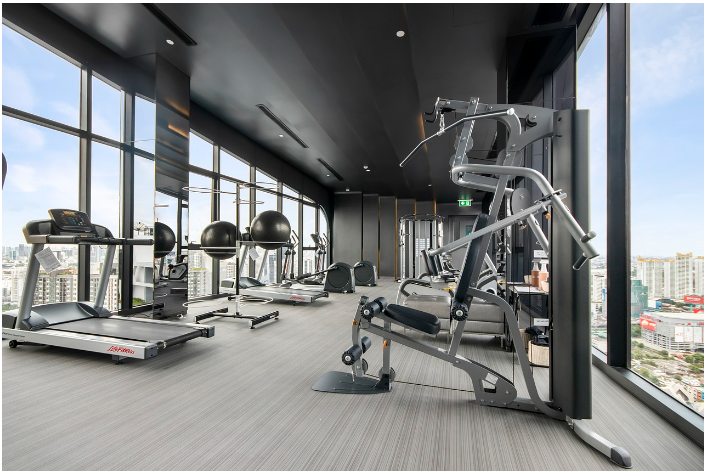You are finding it hard to choose between the modern cable machine or the traditional gym equipment.
In the fitness world, building strength is vital to a healthier and fitter lifestyle.
As people increasingly understand the benefits of strength training—such as muscle development and improved stamina—the way we approach exercise has shifted.
Enter cable machines, a modern twist on traditional gym gear. These machines offer a flexible and dynamic way to build strength. It moves away from the old-school, rigid setups of the past.
This shift highlights the growing popularity of cables, showcasing a fresh and effective method to achieve fitness goals.
What is a cable machine?
A cable machine is a piece of fitness equipment that utilizes a system of adjustable cables and pulleys to provide resistance for strength training exercises.
A cable machine is a fitness apparatus employing adjustable cables and pulleys to offer resistance for strength training exercises.
It usually comprises a frame with one or multiple weight stacks, adjustable pulleys, and diverse attachments like handles, bars, and straps.
Users can opt for their preferred weight by inserting a pin into the weight stack to which the cables are affixed.
The adaptable pulleys enable diverse exercises, providing flexibility in workout routines.
Traditional Gym Equipment
Traditional gym equipment refers to the classic weightlifting tools commonly found in fitness centers and home gyms.
This includes free weights like dumbbells and barbells, weight benches, squat racks, and weight machines.
Dumbbells and barbells allow for a wide range of compound and isolated exercises, targeting various muscle groups.
On the other hand, weight machines provide guided movements with preset resistance.
Comparing the Effectiveness between cable machines and traditional gym equipment
| Feature | Cable Machines | Traditional Gym Equipment |
| Versatility in Exercises | Offers a wide range of exercises with adjustable pulleys and attachments, targeting various muscle groups. | Provides versatility but may require multiple pieces of equipment for different exercises (dumbbells, barbells, machines). |
| Constant Tension | Maintaining constant tension throughout the range of motion promotes muscle engagement and effective workouts. | Tension may vary during exercises, particularly with free weights, impacting muscle engagement. |
| Risk of Injury | Generally lower risk due to guided movements and controlled resistance. Suitable for users at different fitness levels. | Requires proper form and technique, and may pose a higher risk of injury, especially without a spotter for certain exercises. |
| Space Efficiency | Compact design with cable machines, requiring less space for a variety of exercises. | May require more space, especially when incorporating various pieces of traditional equipment. |
| Learning Curve | Relatively low learning curve, making it accessible for beginners. | Beginners may face a learning curve in mastering proper form and technique with free weights. |
| Stabilization | Engages stabilizing muscles, promoting a more comprehensive workout. | Provides stability but may not engage stabilizing muscles as much, potentially leading to imbalances. |
What should I choose?
The decision between cable machines and traditional gym equipment ultimately depends on personal preferences, fitness goals, and practical considerations.
If your fitness routine prioritizes versatility, constant tension, and a lower learning curve, cable machines may be preferred. They offer a space-efficient exercise solution and are well-suited for users at different fitness levels.
On the other hand, if you have specific strength training objectives, enjoy the familiarity of free weights and machines, or have budget constraints, traditional gym equipment could be the better fit.
Consider your available space, budget, and the overall workout experience you find most enjoyable.
It might be beneficial to blend elements of both. It creates a well-rounded home gym that caters to your individual needs and preferences.
Summing Up
Choosing between cable machines and traditional gym equipment hinges on carefully considering individual preferences, fitness goals, and practical constraints.
Cable machines showcase versatility, constant tension, and a user-friendly experience to those seeking dynamic workouts with a lower learning curve.
On the other hand, traditional gym equipment has time-tested appeal and potential for specific strength training.
The decision should be shaped by available space, budget constraints, and the overall enjoyment derived from the chosen equipment.
A harmonious blend of cable machines and traditional gym equipment can create a well-rounded home fitness environment.
